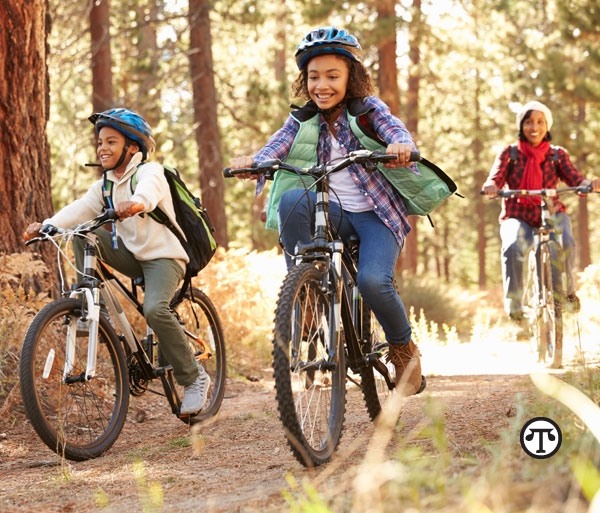
Kids need outdoor play to be active, burn up excess energy and have fun. There are, however, a few steps you can take to protect them from injury.
What You Can Do
Here are seven simple safety tips from Joan Lawrence, Toy Industry Association’s “Toy Safety Mom,” to help keep your child’s outdoor play as safe as it is fun:
1. Make adult supervision a crucial part of outdoor play.
2. Watch children carefully whenever they’re near water. Kids should never be left alone near swimming pools, beaches, lakes or other bodies of water—even “kiddie” pools—no matter what their ages or swim capabilities. Children under 5 should always be no more than an arm’s length from an adult near water sources.
3. Always keep toys away from unsupervised and high-traffic areas, such as driveways and sidewalks, so they don’t lure a child into a dangerous situation.
4. Ride safely. Make sure your kids wear helmets, knee pads and other protective gear when playing with bikes, trikes, scooters and other ride-on toys. Accidental falls are the No. 1 cause of childhood injury, according to the National Center for Injury Prevention and Control.
5. Organize and store toys to prevent slips, trips and falls. Designate “parking” spaces for bikes and other ride-on toys and store smaller items, such as skateboards, on shelves.
6. Uninflated balloons and broken balloon pieces can pose a choking hazard. At parties and other festive events, and especially when kids are playing with water balloons, remember to supervise children and throw away any broken latex pieces you find.
7. Be sure to check and follow age guidance on toy packaging. The age grading doesn’t have anything to do with how smart your child is—it’s safety guidance that’s based on the developmental skills and abilities of children at a given age and the specific features of a toy.
Learn More
You can find further facts and tips about keeping your kids safe and happy from the experts at www.PlaySafe.org.
(NAPSI)—Your kids should move… move around, that is. The American College of Sports Medicine recommends that children participate in 60 minutes of physical activity every day. Physical activity on a regular basis, combined with healthy eating habits, will prevent obesity and other diseases.
Kids need outdoor play to be active, burn up excess energy and have fun. There are, however, a few steps you can take to protect them from injury.
What You Can Do
Here are seven simple safety tips from Joan Lawrence, Toy Industry Association’s “Toy Safety Mom,” to help keep your child’s outdoor play as safe as it is fun:
- Make adult supervision a crucial part of outdoor play.
- Watch children carefully whenever they’re near water. Kids should never be left alone near swimming pools, beaches, lakes or other bodies of water—even “kiddie” pools—no matter what their ages or swim capabilities. Children under 5 should always be no more than an arm’s length from an adult near water sources.
- Always keep toys away from unsupervised and high-traffic areas, such as driveways and sidewalks, so they don’t lure a child into a dangerous situation.
- Ride safely. Make sure your kids wear helmets, knee pads and other protective gear when playing with bikes, trikes, scooters and other ride-on toys. Accidental falls are the No. 1 cause of childhood injury, according to the National Center for Injury Prevention and Control.
- Organize and store toys to prevent slips, trips and falls. Designate “parking” spaces for bikes and other ride-on toys and store smaller items, such as skateboards, on shelves.
- Uninflated balloons and broken balloon pieces can pose a choking hazard. At parties and other festive events, and especially when kids are playing with water balloons, remember to supervise children and throw away any broken latex pieces you find.
- Be sure to check and follow age guidance on toy packaging. The age grading doesn’t have anything to do with how smart your child is—it’s safety guidance that’s based on the developmental skills and abilities of children at a given age and the specific features of a toy.
Learn More
You can find further facts and tips about keeping your kids safe and happy from the experts at www.PlaySafe.org.
